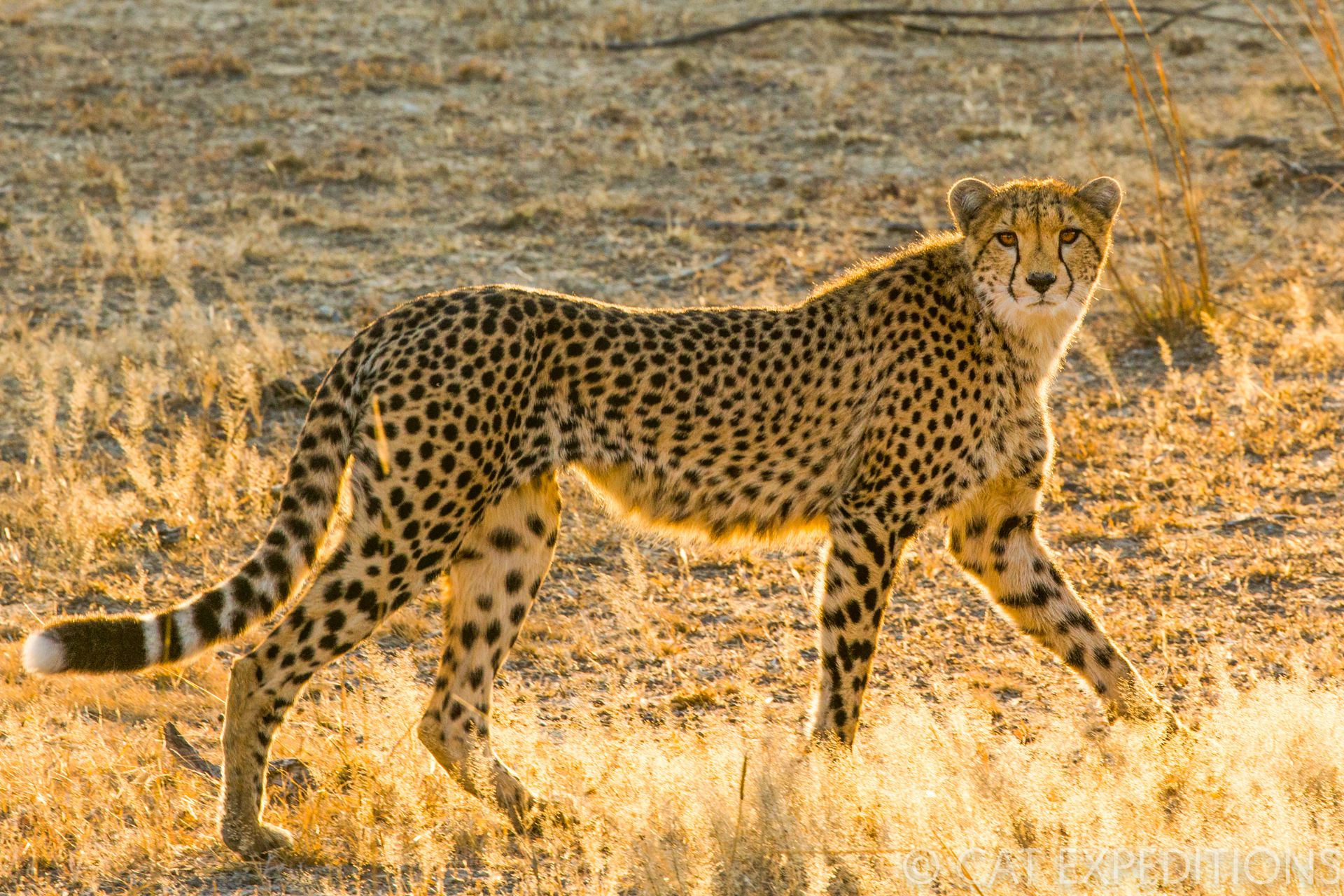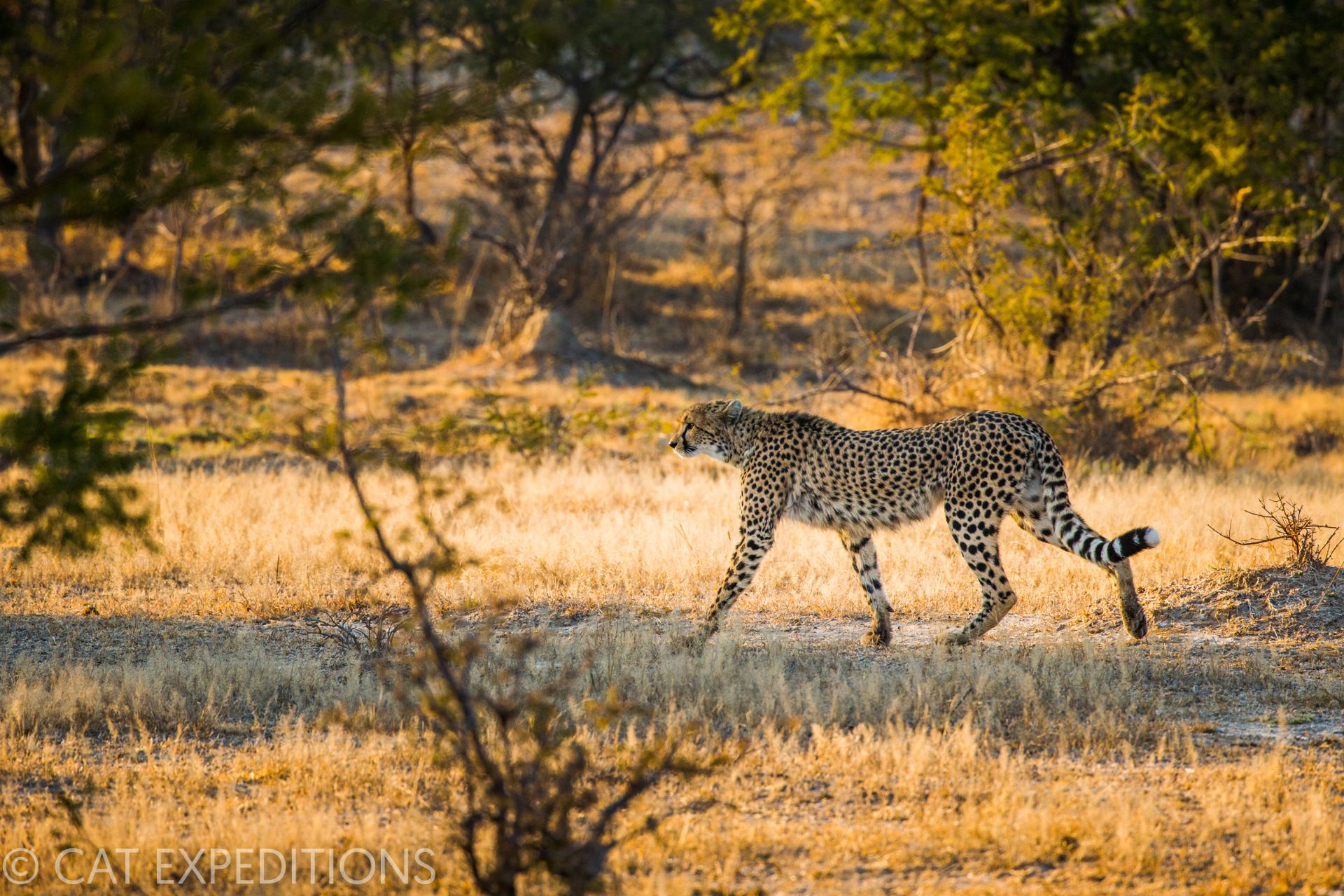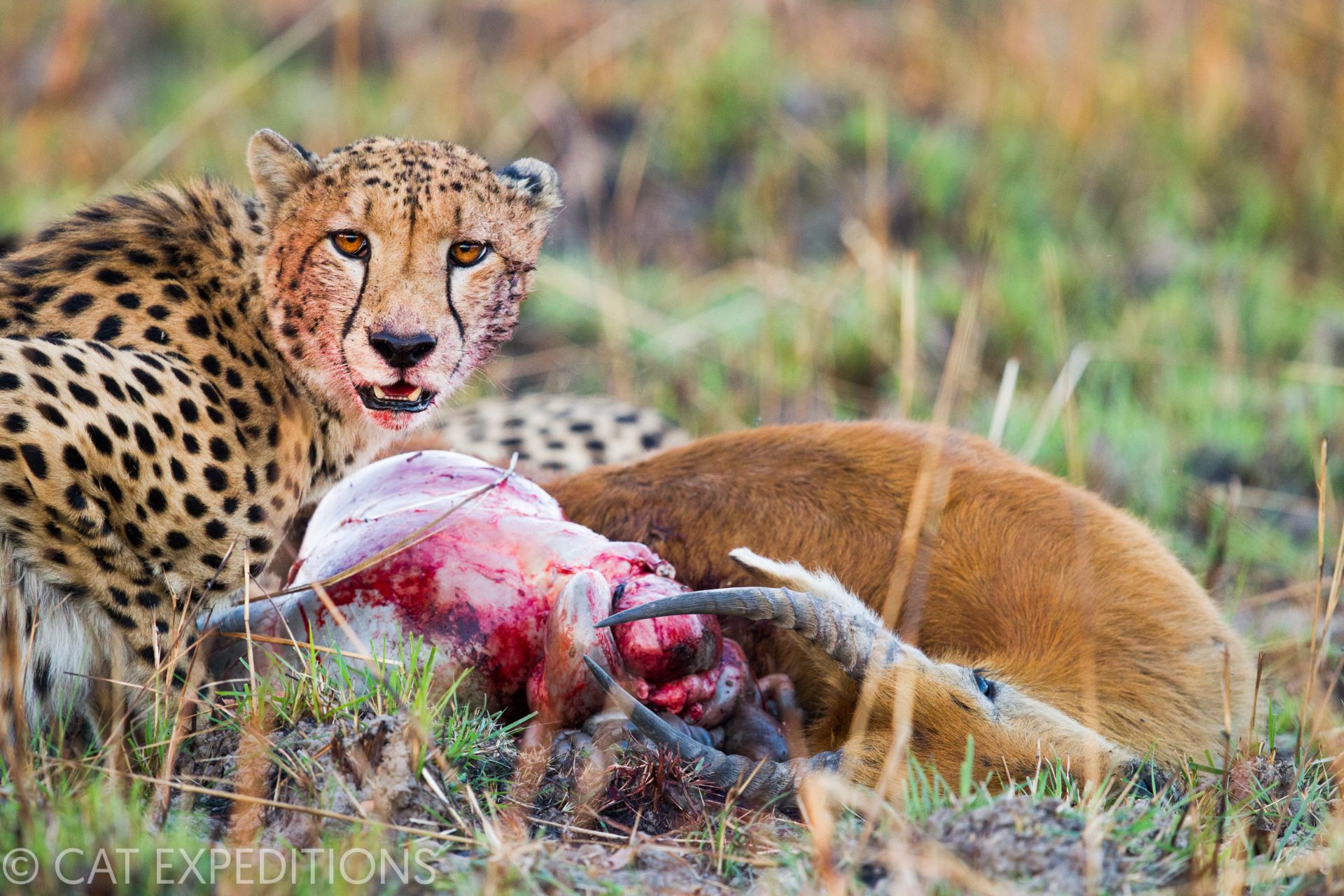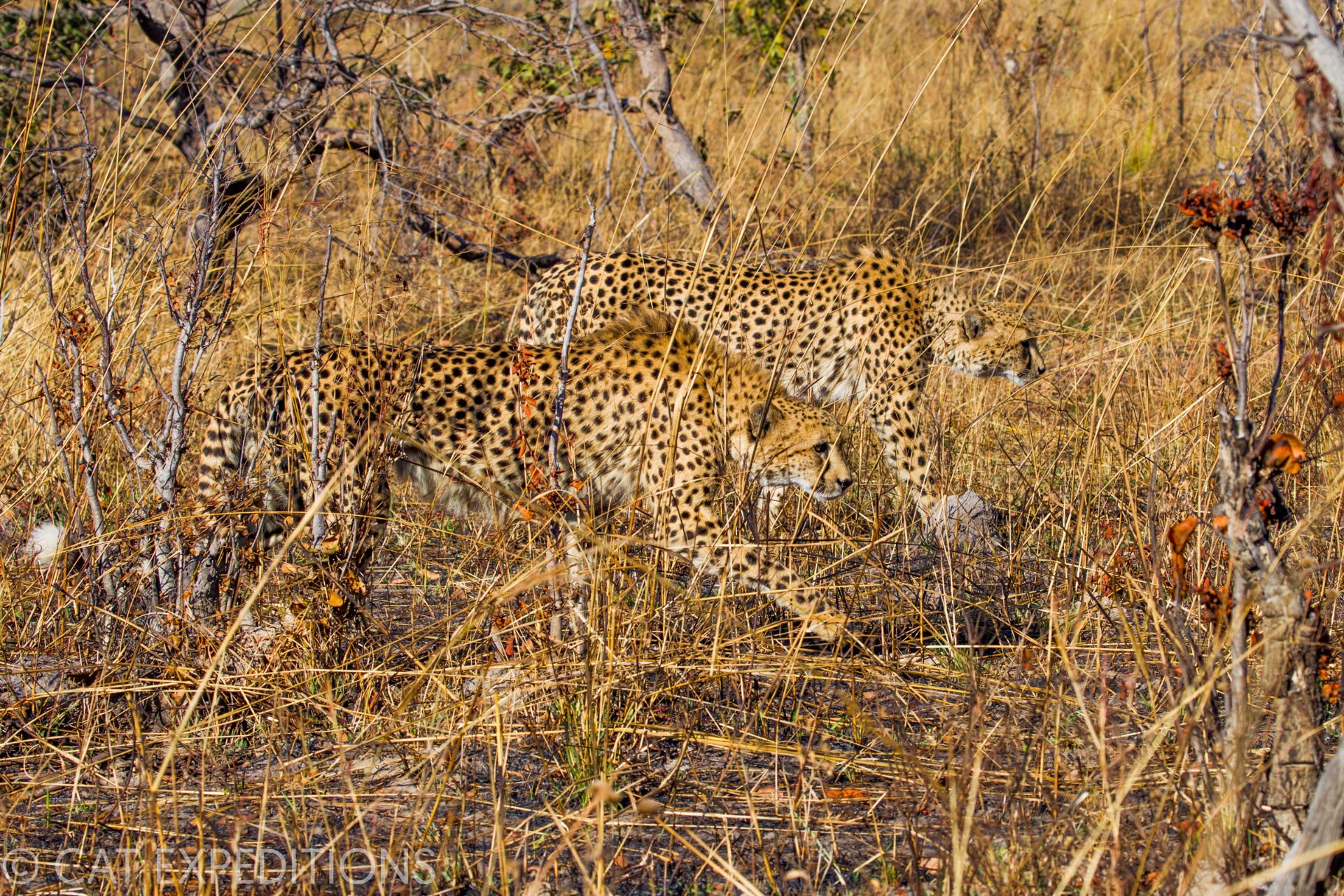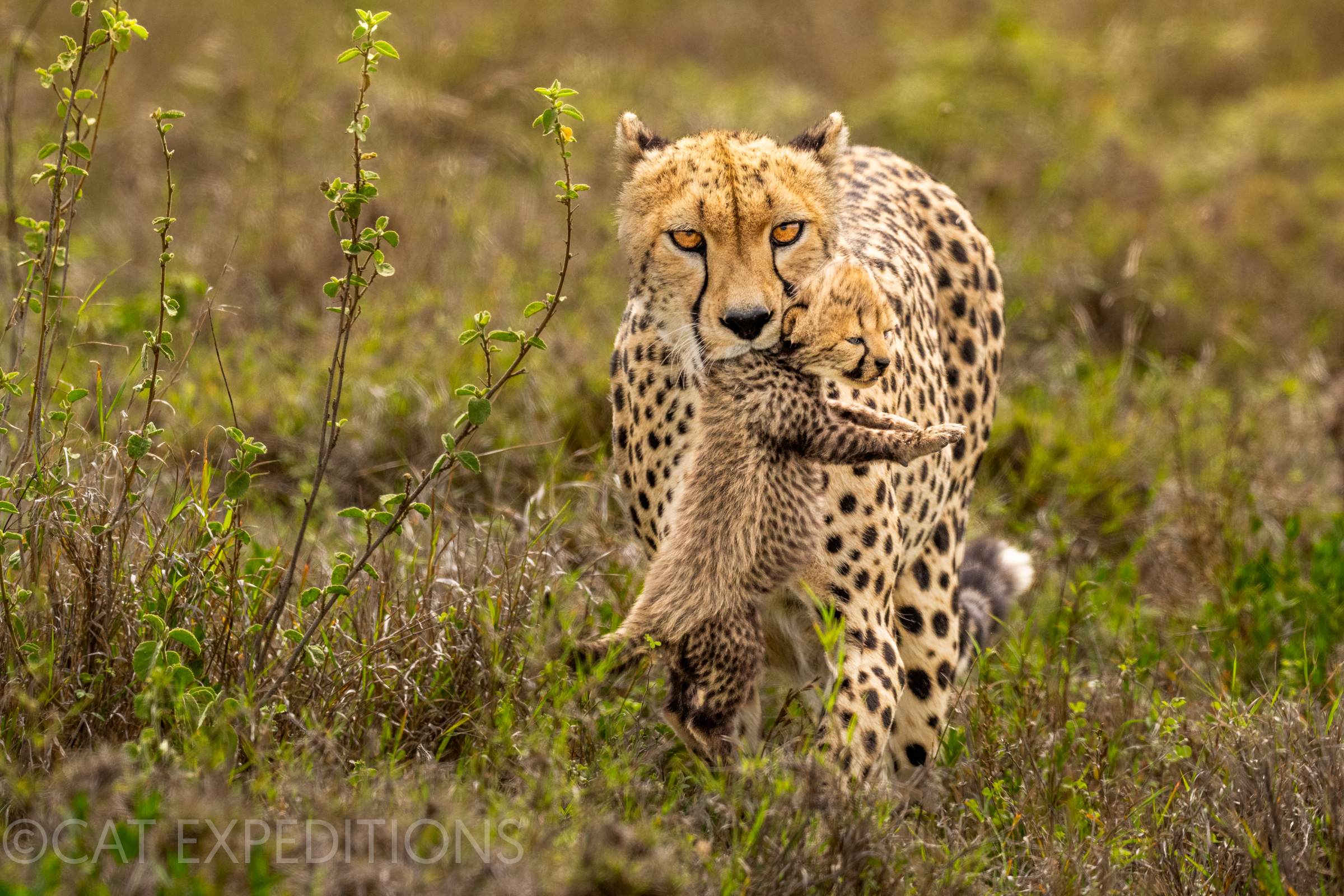Cheetah
CHEETAH (Acinonyx jubatus)
Cheetahs are famously the fastest land mammal in the world, being able to reach speeds up to 70mph (112 kmph). Cheetahs are also unique among cats in their social structure, with males forming coalitions, and females not holding territories. Though mostly found in Africa, there is a small population of critically endangered Asiatic cheetahs left in Iran.
Difficulty: Easy
Cheetah Description
The cheetah is the only wild cat adapted for extended high-speed chases. Its body looks similar to that of a greyhound, with its narrow, tall frame and long legs. The cheetah’s head is relatively small, and is round with small ears. Their tawny fur is covered with around 2000 different black spots. Cheetah spot patterns are like fingerprints and are unique to each individual. Also unique to cheetahs is the fluffy mantle cubs are born with. It probably helps them thermoregulate and disappears when they are around four to six months old. Some people even say that this mantle makes them look like honey badgers, animals not to be messed with!
A female at sunrise. The spot pattern on her fur is unique to her. The easiest way to differentiate cheetahs is to look at the spots on the insides of their legs.
Cheetah Distribution and Habitat
The cheetah’s distribution in Africa has been greatly reduced from its historic range, but still occupy are large range in eastern, and southern Africa. It is very rare in West and Central Africa and almost extinct in Asia, where a population of less than forty animals is struggling to survive in Iran. Cheetahs prefers savanna woodland, grasslands and scrubland, like those found in the Okavango Delta, but is also found in deserts and semi-desert like the Kalahari. In Iran, the Asiatic cheetah is associated with mountain ranges, even experiencing and surviving snow in winter.
Savanna woodland, and grassland, both of which are found in the Okavango Delta are the preferred habitat of cheetahs
Cheetah Feeding Biology
Cheetah Social Organization
The cheetah has a complex and fluid social system, which is second only to the lion. Female cheetahs are solitary with large home ranges that they do not defend. Males on the other hand are social, forming lifelong coalitions of two to four males to compete against other males for access to females. Cheetah coalitions are generally made up of brothers. Single male cheetahs or even pairs will often recruit unrelated males into their coalition. Not all male cheetahs form coalitions however, with about 40% of single males never doing so.
Cheetah Reproduction
African Cheetahs breed year around, with Asiatic cheetahs mating in winter and giving birth in spring. Litter size for cheetahs is typically three to six kittens, with eight being possible. Cheetah kittens start to wean off their mother’s milk at six to eight weeks and will completely stop by four or five months. At twelve to twenty months, cheetah cubs reach independence and will disperse from their mother’s range as a group, even if mixed genders. Females will leave this sibling group with males staying together as a coalition. Males can live up to eleven years in the wild, females up to fourteen.
This mother cheetah had a total of five kittens. When she decided to relocate her den, she had to carry each one individually by its neck, to the new location.
